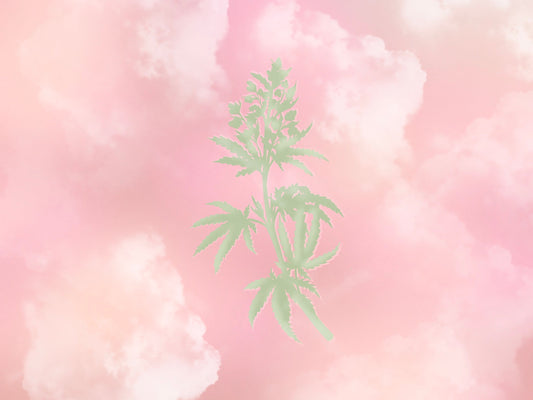CBD is the all-natural healing ingredient that has been found to de-stress skin, support cell production, improve your mood and appetite, and even promote better sleep. But how eco-friendly are CBD products? With demand ever-increasing, we look at how sustainable CBD is: from planting and processing to products and packaging.
What is hemp and how is it used?
Hemp is derived from the cannabis sativa, a tall and stalky plant known for its high levels of cannabidiol (CBD). It’s a bast fibre, which means it comes from the stem of a plant (like linen, flax and bamboo), and has numerous useful qualities.
Hemp is…
- One of the strongest and most durable natural fibres in the world
- Resistant to mould, mildew, and UV light
- Pliable – and the more it’s used, the softer it gets
- Highly absorbent, making it easy to dye
- A thermo-regulator, meaning it’s an ideal material for keeping cool in the heat (or keeping warm in the cold!)
With these great properties, it’s no wonder that hemp has played a key role throughout human history. As one of nature’s most versatile natural fibres, historians have uncovered a rich history of hemp use spanning thousands of years.
Traces of hemp were first found in Asia as early as 8000 BC, and it was discovered shortly after in Europe, Africa, and South America, where seeds and oil were used for pottery and food. According to the book Prehistoric Textiles by E.J.W. Barber, remains of hemp cloth have been discovered in China that date back as far as 5000 BC!
Today, hemp is one of the most eco-friendly and sustainable materials available to us. Unlike many other crops, every part of the hemp plant can be utilised. That’s right, there’s no wastage here! While the fibre is used for fabric, hemp oil and seeds can be used for skin-calming beauty products and food. Hemp is also used in the production of plastics, paints, inks, paper, fuels, and biodiesel.
Why is hemp a sustainable material?
The Made-By Environmental Benchmark for Fibres compares the environmental impact of the most widely used fibres. The study tested 28 fibres and categorised them from ‘Class A’ (the most sustainable) to ‘Class E’ (the least sustainable). Organic hemp topped the chart with a Class A categorisation.
This natural ingredient can be used in numerous ways with little environmental impact. But what makes it so sustainable? It all comes down to how the plant is grown, processed, and packaged.
It’s sustainable to grow
According to Seth Leitman, author of the ‘Green Guru Guides’ book series, the sustainability of growing hemp comes down to three of the plant’s key attributes:
Hemp is tough – This plant isn’t fussy. It doesn’t require much water to thrive (which means local water supplies are conserved), it can be grown outdoors (so no energy is used in the form of heat lamps), and it doesn’t even need much space to grow. Not only is it a hardy crop, but it also grows quickly and can be harvested (on average) every four months.
Hemp is resistant – It’s far more resistant to insects and diseases than other plants, meaning pesticides aren’t needed to yield a rich crop. A weed itself, it also prevents most other weeds growing in its vicinity, meaning fewer herbicides are required. Pesticides and herbicides are harmful to the environment, making hemp farming a safe and future-conscious practice.
Hemp is absorbent – It can absorb more carbon dioxide (CO2) than trees, making it a viable solution for reducing the world’s greenhouse gas emissions. As a naturally fast-growing crop – which is continually planted to keep up with demand – CBD companies are helping to reduce CO2 emissions. Hemp farms can even produce more oxygen than some forests!
It can be recycled
Not only can every part of the hemp plant be used, it is also biodegradable, meaning disposing of it isn’t harmful to the environment. Reputable CBD brands will also make the effort to ensure the packaging of their products is either reusable or recyclable.
Here at Juana Skin, we use residual hemp leaves to create the bags our products are delivered in. Our boxes are made with recycled materials and FSC-certified outer packaging – the highest standard of protection for endangered species and forests. Not only that, our bottles are also recycled (and are infinitely recyclable), made from 100% recycled glass. All of this means you end up with a sustainable, high-quality CBD product that's great for your skin and kind to our planet!
Our CBD is sourced from EU-certified fields, is minimally processed, and arrives to you in 100% recyclable packaging.


